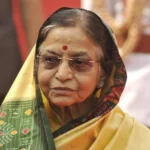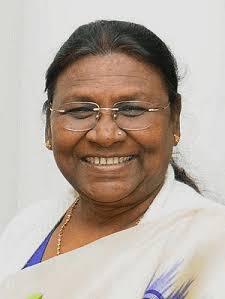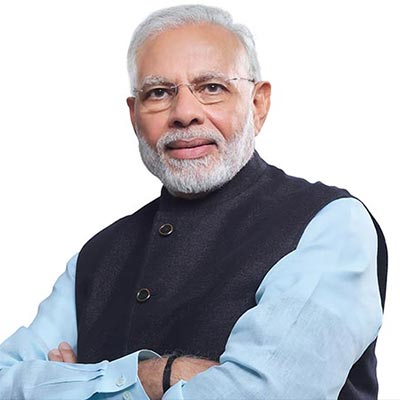Nelson Mandela was one of the most influential and inspiring leaders of the 20th century. He dedicated his life to fighting against racial oppression and injustice in South Africa and beyond. He endured hardship, imprisonment, and sacrifice for his ideals of freedom and equality. He emerged as a peacemaker and a statesman who led his country to democracy and reconciliation. He left behind a legacy of courage, compassion, and hope for humanity.
In this blog, we will explore the biography of Nelson Mandela, from his birth to his death, and learn about his remarkable achievements, challenges, and contributions to the world.

Historical and social context of South Africa
Before we delve into Nelson Mandela’s life story, it is important to understand the historical and social context of South Africa, where he was born and lived. South Africa was colonized by the Dutch in the 17th century and later by the British in the 19th century. The white minority ruled over the black majority and other racial groups, such as the Coloureds (mixed-race) and the Indians. The white settlers exploited the land and resources of the native people, who were subjected to discrimination, dispossession, and violence.
In 1948, the National Party, which represented the Afrikaners (descendants of the Dutch settlers), came to power and implemented a system of racial segregation known as apartheid. Apartheid literally means “apartness” in Afrikaans. It divided the population into four racial groups: white, black, Coloured, and Indian. Each group had different rights, privileges, and restrictions. The whites enjoyed political and economic dominance, while the nonwhites were oppressed and marginalized. They had to live in separate areas, use separate facilities, carry identity documents (pass books), and obey harsh laws that restricted their movement, education, employment, voting, marriage, and citizenship.
The apartheid system sparked resistance from various groups and individuals who opposed its injustice and inequality. Some used peaceful methods such as protests, petitions, boycotts, strikes, and civil disobedience. Others used violent methods such as sabotage, guerrilla warfare, bombings, and assassinations. The most prominent anti-apartheid organization was the African National Congress (ANC), which was founded in 1912 as a political party that advocated for the rights of black South Africans. The ANC later formed alliances with other groups that represented different races, classes, genders, religions, and ideologies.
Early life of Nelson Mandela
Nelson Mandela was born on July 18, 1918 in Mvezo, a small village in the Eastern Cape province of South Africa. His full name was Nelson Rolihlahla Mandela, but he was also known by his clan name Madiba. He belonged to the Xhosa-speaking Madiba clan of the Tembu group, one of the many ethnic groups in South Africa. His father Henry Mandela was the chief of the Tembu group and a counselor to the king of the Thembu people. His mother Nonqaphi Nosekeni was Henry’s third wife out of four.
Mandela grew up in a rural environment where he learned about his culture, traditions, values, and history from his elders. He also took part in the activities and initiation ceremonies of his local tribe. He attended a Methodist missionary school where he received a Western education and learned English. He was given the name Nelson by his teacher on his first day of school, following a common practice at that time.
Mandela’s father died when he was nine years old. He was then adopted by Jongintaba Dalindyebo, the regent of the Thembu people who was a friend of his father. He moved to Mqhekezweni, the royal residence of the Thembu king. There he received a privileged education and exposure to politics and leadership. He attended Clarkebury Boarding Institute and Wesleyan College where he excelled in academics and sports. He also developed an interest in African history and nationalism.
Mandela enrolled at the University of Fort Hare in 1939 to study for a Bachelor of Arts degree. There he met other future leaders such as Oliver Tambo and Robert Sobukwe. He also joined the Student Representative Council (SRC) where he participated in student politics. However, he was suspended from the university in 1940 for joining a protest against the quality of food. He then returned to Mqhekezweni where he faced pressure from Jongintaba to arrange a marriage for him. Mandela refused to accept this arrangement and ran away to Johannesburg with his cousin Justice.
Education and career of Nelson Mandela
In Johannesburg, Mandela worked as a mine security officer while looking for other opportunities. He met Walter Sisulu, a real estate agent and an ANC activist, who became his mentor and friend. Sisulu helped Mandela to find a job as a clerk at a law firm and to enroll at the University of the Witwatersrand to study law. Mandela faced racism and discrimination at the university, where he was one of the few black students. He also struggled with his studies and failed some courses.
In 1944, Mandela joined the ANC and became one of the founding members of its Youth League, along with Tambo, Sisulu, and others. The Youth League aimed to transform the ANC into a more radical and militant organization that could mobilize the masses against apartheid. Mandela rose to prominence in the ANC as a charismatic and eloquent leader who advocated for nonviolent resistance and civil disobedience. He also met and married Evelyn Ntoko Mase, a nurse and a cousin of Sisulu. They had four children: Thembekile, Makaziwe, Makgatho, and Makaziwe (the first Makaziwe died in infancy).
Mandela held various positions in the ANC, such as the secretary and later the president of the Transvaal branch, the national volunteer-in-chief, and the deputy national president. He played a key role in organizing and leading several campaigns against apartheid laws, such as the 1952 Defiance Campaign, the 1955 Congress of the People, and the 1956 Treason Trial. He also established South Africa’s first black law firm with Tambo in 1952, specializing in cases resulting from apartheid legislation.
People Also Reads: [insert page=’narendra-modi-biography’ display=’link’]
Resistance and imprisonment of Nelson Mandela
In 1956, Mandela was arrested along with 155 other activists and charged with treason for their involvement in the Freedom Charter, a document that outlined the vision and demands of the anti-apartheid movement. The trial lasted for four years and ended with the acquittal of all the accused. During this time, Mandela’s marriage with Evelyn deteriorated and they divorced in 1958. He then married Winnie Madikizela, a social worker who later became a prominent anti-apartheid activist herself.
In 1960, after the Sharpeville massacre, where police killed 69 protesters who were demonstrating against the pass laws, the ANC was banned by the government. Mandela went underground and formed a new military wing of the ANC called Umkhonto we Sizwe (Spear of the Nation). He believed that armed struggle was necessary to overthrow apartheid, as peaceful methods had failed. He received guerrilla training in Morocco and Ethiopia and returned to South Africa in 1962 to lead sabotage attacks against government targets.
He was arrested again in August 1962 and sentenced to five years in prison for inciting workers to strike and leaving the country without permission. In June 1964, he was brought to stand trial along with other ANC leaders in what became known as the Rivonia Trial. He was charged with sabotage and conspiracy to overthrow the government by violent means. He gave a famous speech in court, saying:
“I have fought against white domination, and I have fought against black domination. I have cherished the ideal of a democratic and free society in which all persons live together in harmony and with equal opportunities. It is an ideal which I hope to live for and to achieve. But if needs be, it is an ideal for which I am prepared to die.”
He was convicted and sentenced to life imprisonment. He spent 27 years in prison, mostly on Robben Island, where he was confined to a small cell without a bed or plumbing and forced to do hard labor in a lime quarry. He suffered from harsh conditions, isolation, censorship, and abuse by prison guards. He also contracted tuberculosis due to poor ventilation. Despite these difficulties, he maintained his dignity, vision, and leadership. He studied Afrikaans to communicate with his warders and fellow prisoners. He obtained a bachelor’s degree in law by correspondence from the University of London. He also wrote letters to his wife Winnie and his children, who were also harassed and detained by the authorities.
International response and support
While Mandela was in prison, his struggle against apartheid gained international attention and support. Various groups and individuals around the world campaigned for his release and for sanctions against South Africa. They also recognized his contribution to the culture of peace and freedom by honoring him with numerous awards and honors. Some examples of the international response and support for Mandela were:
- The United Nations (UN), which passed several resolutions condemning apartheid as a crime against humanity and calling for Mandela’s release. The UN also imposed an arms embargo on South Africa in 1963 and declared April 11 as the International Day of Solidarity with Political Prisoners in South Africa in 1979. In 1988, the UN held a special session to mark Mandela’s 70th birthday, which was attended by over 100 heads of state and government. In 1990, Mandela addressed the UN General Assembly for the first time, thanking the world body for its support and urging it to maintain pressure on South Africa until apartheid was abolished.
- The Commonwealth of Nations, which was a group of former British colonies that shared historical ties and values. The Commonwealth suspended South Africa’s membership in 1961 and imposed economic sanctions on the country in 1986. The Commonwealth also played a key role in facilitating dialogue between the ANC and the South African government, leading to the end of apartheid. In 1994, Mandela attended the Commonwealth Heads of Government Meeting in Malta, where he was welcomed back as a member and praised for his leadership.
- The Anti-Apartheid Movement (AAM), which was founded in Britain in 1959 by activists who opposed apartheid and supported the ANC. The AAM organized protests, boycotts, petitions, lobbying, education, and solidarity actions to pressure the British government and other countries to cut ties with South Africa. The AAM also coordinated with other anti-apartheid groups around the world, such as the Free South Africa Movement in the United States, the Canadian Coalition Against Apartheid, and the European Community Campaign Against Apartheid.
- The Nobel Peace Prize Committee, which awarded Mandela and de Klerk the Nobel Peace Prize in 1993 for their role in ending apartheid and establishing democracy in South Africa. The committee praised them for their courage, vision, and perseverance in pursuing a peaceful solution to a seemingly intractable conflict. The prize also recognized their contribution to the advancement of human rights and dignity in their country and beyond.
- The celebrities and activists who advocated for Mandela’s release and supported his causes. Some of them were: Bob Geldof , who organized the Live Aid concerts in 1985 to raise funds for famine relief in Africa; Stevie Wonder , who dedicated his Oscar for Best Original Song in 1985 to Mandela and announced that he would not accept it until Mandela was freed; Harry Belafonte , who led a delegation of artists and entertainers to visit Mandela in prison in 1986; Muhammad Ali , who met with Mandela in London in 1990 after his release; Oprah Winfrey , who interviewed Mandela on her show in 2000 and donated millions of dollars to his foundations; Bono , who performed at several concerts for Mandela’s causes and became his friend; Morgan Freeman , who portrayed Mandela in the film Invictus (2009), based on his role in uniting South Africa through rugby during the 1995 World Cup.
Release and presidency period of Nelson Mandela
In 1989, F.W. de Klerk became president of South Africa and initiated a series of reforms that gradually dismantled apartheid. He lifted the ban on the ANC and other political organizations and released Mandela from prison on February 11, 1990. Mandela emerged as a national and international symbol of freedom and reconciliation. He worked with de Klerk to negotiate a peaceful transition to majority rule and end decades of violence and oppression.
Mandela and de Klerk agreed on a framework for a new constitution that would guarantee equal rights and representation for all South Africans. They also agreed to hold the country’s first democratic and multiracial elections in 1994. Mandela led the ANC in the multiparty talks that resulted in the Interim Constitution of 1993 and the Electoral Act of 1993. He also campaigned across the country to mobilize support for the ANC and to promote peace and tolerance among different groups. In 1993, he and de Klerk were jointly awarded the Nobel Peace Prize for their efforts.
In 1994, Mandela became South Africa’s first Black president and the first elected in a fully representative democratic election. He received 62% of the votes, while de Klerk’s National Party received 20%. He formed a government of national unity that included members of the ANC, the National Party, and the Inkatha Freedom Party, a Zulu-based party that had been involved in violent clashes with the ANC. He appointed de Klerk as his deputy president and Thabo Mbeki as his second deputy president. His cabinet also reflected racial, gender, and political diversity.
His administration focused on dismantling the legacy of apartheid by fostering racial reconciliation, promoting human rights, improving social services, and attracting foreign investment. He also created the Truth and Reconciliation Commission (TRC) to investigate past human rights abuses and grant amnesty to perpetrators who confessed their crimes. The TRC was chaired by Archbishop Desmond Tutu, another Nobel Peace Prize laureate and anti-apartheid leader. The TRC aimed to heal the wounds of the past and to build a new society based on truth, justice, and forgiveness.
Retirement and death
Mandela retired from politics in 1999, after serving one term as president. He was succeeded by Mbeki, who had been his trusted ally and protégé. He remained a revered figure in South Africa and around the world, as an advocate for peace, democracy, and human dignity. He established several foundations and organizations to continue his humanitarian work and support his causes. Some of them were:
- The Nelson Mandela Foundation , which was founded in 1999 to promote his vision and values through dialogue, advocacy, research, memory, and legacy projects.
- The Nelson Mandela Children’s Fund , which was founded in 1995 to improve the lives of children and youth in South Africa through education, health, protection, and participation programs.
- The Mandela Rhodes Foundation , which was founded in 2003 to provide scholarships for young Africans to pursue higher education and leadership development.
- The Elders , which was founded in 2007 by Mandela and other global leaders such as Jimmy Carter, Kofi Annan, Mary Robinson, and Graça Machel (his third wife) to address some of the world’s most pressing problems such as poverty, conflict, climate change, and human rights.
He also published his autobiography, Long Walk to Freedom , in 1994, which became an international bestseller. The book chronicled his life from his childhood to his presidency, revealing his personal struggles, sacrifices, and triumphs. It was later adapted into a film starring Idris Elba as Mandela.
In 1996, he divorced Winnie after she was convicted of fraud and kidnapping charges. She had also been accused of involvement in human rights violations during the anti-apartheid struggle. In 1998, he married Graça Machel , the widow of former Mozambican president Samora Machel . She was also a human rights activist and a former minister of education in Mozambique. She became Mandela’s companion and partner in his later years.
He had six children from his previous marriages: Thembekile (who died in a car accident in 1969), Makaziwe (who died in infancy), Makgatho (who died of AIDS in 2005), Makaziwe (his second daughter with the same name), Zenani , and Zindziswa (who died of COVID-19 in 2020). He also had a stepdaughter Josina , who was Machel’s daughter from her first marriage. He also had 17 grandchildren and 14 great-grandchildren.
Mandela suffered from various health problems in his later years, including prostate cancer and lung infections. He was hospitalized several times and received intensive care. He died on December 5, 2013, at the age of 95, in Johannesburg. His death was mourned by millions of people across the world, who celebrated his life and legacy. He was given a state funeral on December 15, 2013, in Qunu, his ancestral village, where he was buried next to his family members.
Honors and awards
Mandela received numerous honors and awards for his contribution to the culture of peace and freedom. Some of them were:
- The Nobel Peace Prize (1993), which he shared with de Klerk for their role in ending apartheid and establishing democracy in South Africa.
- The Sakharov Prize (1988), which is awarded by the European Parliament to individuals or groups who have made an exceptional contribution to the fight for human rights and democracy.
- The Bharat Ratna (1990), which is India’s highest civilian award, given for the highest degree of national service.
- The Nishan-e-Pakistan (1992), which is Pakistan’s highest civilian award, given for outstanding service to the country or humanity.
- The Presidential Medal of Freedom (2002), which is the United States’ highest civilian award, given for meritorious contributions to the security or national interests of the country, world peace, or cultural endeavors.
- The Order of St. John (1996), which is a British royal order of chivalry that recognizes service to humanity, especially in the fields of health and welfare.
- The Order of Canada (1998), which is Canada’s highest civilian honor, given for outstanding achievement, dedication to the community, and service to the nation.
- The Order of Merit (1995), which is a British dynastic order that recognizes distinguished service in the armed forces, science, art, literature, or public service.
- The Order of Lenin (1990), which was the Soviet Union’s highest civilian award, given for outstanding service to the state and society.
- The Order of Australia (1999), which is Australia’s highest civilian honor, given for achievement or meritorious service.
- The Order of the Nile (1995), which is Egypt’s highest state honor, given for exceptional services to the nation.
- The Congressional Gold Medal (1998), which is the United States’ highest civilian award bestowed by Congress, given for distinguished achievements and contributions.
- The Gandhi Peace Prize (2000), which is an Indian award that recognizes social, economic, and political transformation through nonviolence and other Gandhian methods.
Conclusion
Nelson Mandela was one of the most influential and inspiring leaders of the 20th century. He dedicated his life to fighting against racial oppression and injustice in South Africa and beyond. He endured hardship, imprisonment, and sacrifice for his ideals of freedom and equality. He emerged as a peacemaker and a statesman who led his country to democracy and reconciliation. He left behind a legacy of courage, compassion, and hope for humanity.
Sources:
- Britannica. (n.d.). Nelson Mandela | Biography, Life, Education, Apartheid, Death, & Facts. https://www.britannica.com/biography/Nelson-Mandela
- Wikipedia. (n.d.). Nelson Mandela. https://en.wikipedia.org/wiki/Nelson_Mandela
How useful was this post?
Click on a star to rate it!
Average rating 5 / 5. Vote count: 1
No votes so far! Be the first to rate this post.





